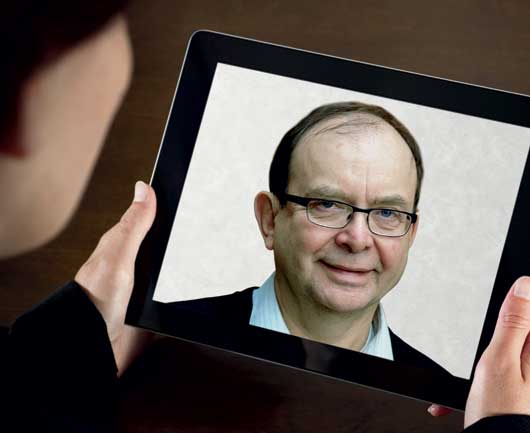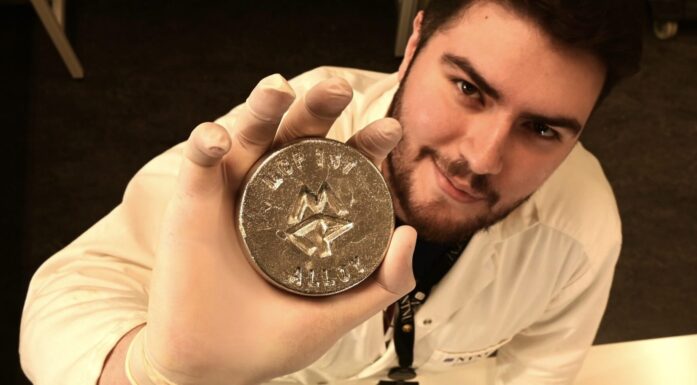The psychologist in your pocketbook
Turn on your tablet, pour yourself a cup of coffee, and say hello to the psychologist in our living room.
“I think it’s about time that psychologists started using digital tools to bring expert help to people who live far away from the big cities,” says Patrick Vogel.
Vogel is a psychology professor at NTNU, and has in the past treated patients who are severely afflicted with a type of anxiety, obsessive-compulsive disorder (OCD), by way of video conferencing and mobile phone conversations.
Now Vogel wants to take the next step, by using the iPad as a way to cure anxiety.
Expert help at home
For people who live far from Norway’s bigger cities or towns, the journey to get help can be an exhausting marathon: You have to get up at the crack of dawn, scrape the snow and ice from your car, and clear your driveway. Then you have to drive two hours, after which you have to take an hour-long flight to get to the closest place where a psychologist can see you – for 45 minutes. After that, it’s the bus back to the airport, then an hour on the plane. Then it’s into the car again, except that it has been
newly covered by ice and snow that you have to scrape off. And finally, after the two-hour drive, there’s the driveway full of snow again, which has to be cleared before your journey is truly over.
During the journey there is also the obsession that you will die from AIDS because so many people with germ-ridden hands have touched the door handles at the airport. Your heart pounds, you’re covered in sweat, your whole body is tense. That’s not to mention the 16 journeys you made to the WC to scrub your hands under boiling hot water.
Or this:
Turn on your tablet, pour yourself a cup of coffee and say hello to the psychologist in your living room.
“I have had many phone calls from people who live out in the country and who despair that they will never get any help. People get sicker while they are on the waiting list, and we have to recognize that not everyone lives next door to the expert help they need to get better. The approach we use today for people who cannot travel for help is to call them on the telephone. But our human ability to feel empathy and compassion is a thousand times better via video,” says Vogel.
Healthy after 14 years of anxiety
Vogel has already conducted a pilot study, during which he wanted to see if patients with anxiety disorders and compulsive behaviour had equally good overall prognoses from treatment via video and mobile phone as they had in a therapist’s office.
Six patients from the waiting list at Aker Hospital were offered six meetings via video conferencing, and nine mobile conversations. The videoconferences were conducted at the hospital. This was the first time that psychiatric patients in Norway have been offered this kind of therapy, called exposure with response prevention (ERP), and which is only undertaken using videoconferences and mobile phone sessions.
After treatment, four of the patients had recovered, and the gains were maintained at a follow-up three months later. Most of the patients had been suffering from OCD for many years and had been unsuccessfully treated by other forms of psychotherapy.
Will use Facetime
These sensationally good results have recently been published in the renowned academic publication, Journal of Anxiety Disorders.
The treatment results from the pilot study are in line with the best in the world from regular face-to-face therapy, says Vogel. He will therefore expand the study to include 30 patients, and hopes to use an iPad as part of the treatment. What is special about the iPad is that it has a built-in program called Facetime, a kind of Skype that allows the psychologist to see the patient on his iPad, while at the same time the patient sees the psychologist. But there are strict rules for carrying out therapy over the Internet.
“The Norwegian Centre for Telemedicine has helped us to see how safety issues can be solved technically. The regional ethical committee for research has recently approved the use of iPads in the project and we have begun to use them in treatment with the first patients,” says Vogel.
Show me what’s “dangerous”
Vogel uses exposure therapy to cure anxiety.
“If the patient has a fear of getting sick from germs, he or she must expose himself or herself to germs and see that everything is OK, even if his or her hands are dirty. The patient has to learn that the thoughts themselves are not dangerous, and whatever it is that he or she is afraid of does not happen. All of the exposure takes place gradually. When a patient with a fear of germs is able to use a public toilet without excessively washing his or her hands, that patient is considered cured,” said Vogel.
In addition to enabling a therapist to be able to help more people, there’s a further benefit to offering therapy using the iPad, he says.
“A patient can walk around in his or her familiar surroundings, and show me what he or she is afraid of. And I can help, right then and there,” Vogel says.
Anne Sliper Midling





